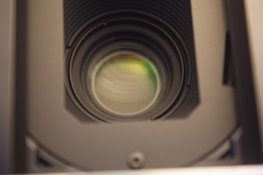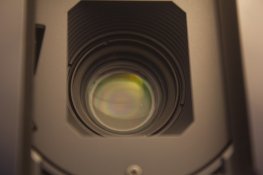Ezraevanscameratech
Member
Hi I recently purchased a Fujifilm ga645i from Japan for quite a lot of money. Previously I have sent another one purchased in the uk back due to it having quite a bit of mould on the lens.
The new camera looks absolutely beautiful and the lens looks perfect, except when viewed under my bedroom light. Under this light you can see some multi coloured rings. Mainly they are green and magenta but on closer inspection blue and yellow are also visible.
I contacted the seller asking for a return due to my concerns that it might be the beginnings of lens separation. The seller seems trust worthy and has good feedback on ebay. He was very apologetic and said he would show the picture to his camera repair guy who used to work for fuji.
I'll post his reply below. It would be really helpful to get some other opinions on the images and on his reply as I have no idea how factual the information is and can't seem to find much info on what he was talking about in relation to this lens or lenses in general.
The reply is as follows:
Hello. I would like to inform you that I have received an answer from Fuji Professional.
He said, "Basically, if the links look like concentric circles, it doesn't matter.”
I asked, "Will the shape of the vortex change, or will it deteriorate or otherwise require repair in the future? ”
The following is a direct translation of the answer because of the technical description.
”There is no problem. Since light is a wavelength and a wave, we can see stripes due to the overlapping of reflected wave peaks. If the reflective surface is at the same height as the peaks or troughs of the light waves, you can see the rings.
The factory also checks the stripe pattern to determine the radius of curvature of the lens, but they use a fixed wavelength rather than white light to determine that there is one or two stripes relative to the curvature of the reference lens.
If you see a rainbow like soap bubbles in the corner of the lens, you can determine that it is out of balsam, and if the vortex is a large distorted stripe pattern, you can be concerned that the lens spacing is off, etc.
It is said that the stronger the curvature of the lens and the narrower the gap between the lens and the lens, the more likely it is to appear, but it is also affected by the anti-reflection film. For your information, one stripe is 1/2λ (λ is the wavelength), which means a nanometer difference.”
As a result, there were no problems at all and no degradation.





The new camera looks absolutely beautiful and the lens looks perfect, except when viewed under my bedroom light. Under this light you can see some multi coloured rings. Mainly they are green and magenta but on closer inspection blue and yellow are also visible.
I contacted the seller asking for a return due to my concerns that it might be the beginnings of lens separation. The seller seems trust worthy and has good feedback on ebay. He was very apologetic and said he would show the picture to his camera repair guy who used to work for fuji.
I'll post his reply below. It would be really helpful to get some other opinions on the images and on his reply as I have no idea how factual the information is and can't seem to find much info on what he was talking about in relation to this lens or lenses in general.
The reply is as follows:
Hello. I would like to inform you that I have received an answer from Fuji Professional.
He said, "Basically, if the links look like concentric circles, it doesn't matter.”
I asked, "Will the shape of the vortex change, or will it deteriorate or otherwise require repair in the future? ”
The following is a direct translation of the answer because of the technical description.
”There is no problem. Since light is a wavelength and a wave, we can see stripes due to the overlapping of reflected wave peaks. If the reflective surface is at the same height as the peaks or troughs of the light waves, you can see the rings.
The factory also checks the stripe pattern to determine the radius of curvature of the lens, but they use a fixed wavelength rather than white light to determine that there is one or two stripes relative to the curvature of the reference lens.
If you see a rainbow like soap bubbles in the corner of the lens, you can determine that it is out of balsam, and if the vortex is a large distorted stripe pattern, you can be concerned that the lens spacing is off, etc.
It is said that the stronger the curvature of the lens and the narrower the gap between the lens and the lens, the more likely it is to appear, but it is also affected by the anti-reflection film. For your information, one stripe is 1/2λ (λ is the wavelength), which means a nanometer difference.”
As a result, there were no problems at all and no degradation.









